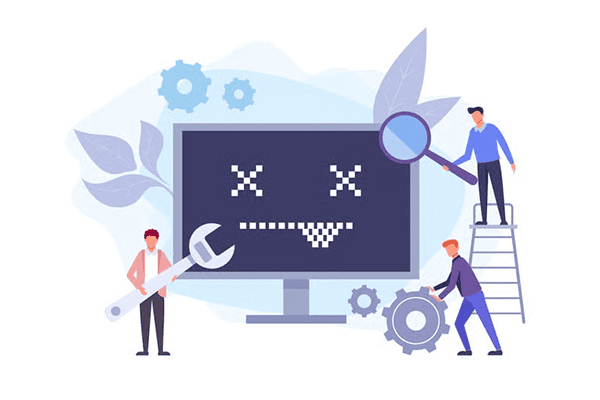
As a blog owner, your worst nightmare could be seeing your website down, especially during peak traffic. Not only does it affect your reputation, but it also results in lost revenue and missed opportunities. However, with proactive measures, you can significantly minimize the chances of your blog going down.
Table of Contents
The Consequences of Downtime
Ever clicked on a website or blog link and been met on the other end with a dreaded “Error 404 – Page Not Found” message? Or maybe you get a never-ending loading symbol? We all do from time to time. And how long do you stick around before finding another page? For most, it’s a matter of just a few seconds.
If your blog goes down, you aren’t just missing clicks in the short term. You could potentially be turning visitors away from your site indefinitely and inadvertently encouraging them to visit your competition instead.
In today’s era of high-speed internet and quick results, people don’t have patience for downtime (or even slow websites). That’s why 40 percent of people will abandon a website if it takes more than three seconds to load.
The repercussions of downtime are serious. We’re talking fewer page views, decreased engagement, less ad revenue, negative reputation, damaged blog credibility, and lower search rankings. Thus, it’s something that you should proactively address before it becomes an issue.
3 Tips for More Blog Uptime
As you look for ways to reduce downtime and keep your blog running fast, here are several tips you can put into action:
Choose a Reliable Hosting Provider
The foundation of a continuously running blog starts with your hosting provider. They’re the ones keeping your site accessible on the internet around the clock. However, not all hosting services are created equal, and your choice can greatly influence your blog’s uptime.
Reliability is key when selecting a provider. You want a host that can guarantee at least 99.99 percent uptime. That translates to just 8.76 hours of downtime per year. (Some will even offer you compensation if they don’t uphold their guarantee.)
Depending on how “nerdy” you want to get, you should evaluate the host’s technology infrastructure. This includes their data center, which should be redundant.
According to Park Place Technologies, “Data center redundancy is the practice of leveraging duplicated hardware – power supplies, servers, cooling systems, etc. – necessary to keep things up and running in the event of an outage, hardware failure, or disaster. In most cases, a redundant data center architecture only duplicates the most critical components.”
Customer service is another thing to think about. When technical issues do arise, you need to make sure you can get on the phone with someone ASAP to solve the issue. This is why 24/7 support via multiple channels is so important.
Optimize Your Website
Do everything within your power to optimize your website’s performance so that the user experience is impeccable. In doing so, you’ll also help your blog’s uptime. (Because it’s impossible to have a good user experience without prioritizing fast page-loading speeds.)
When optimizing website performance, focus on the following:
- Minimize HTTP requests by streamlining site elements and using CSS instead of images whenever possible.
- Enable compression using popular compression methods like Gzip.
- Reduce redirects so your visitors don’t spend time waiting for pages that won’t load.
- Always leverage browser caching. This speeds up the time for pages to load for return visitors.
Plan for Traffic Spikes
While having a surge of visitors to your blog may sound like a dream come true, it can quickly become a nightmare if your site isn’t prepared to handle the increased load. A sudden influx of traffic can strain your server resources, resulting in slow loading times or even a complete website crash.
You should plan ahead and do your best to prepare your blog for traffic spikes (which often happen around promotions, Black Friday sales, or times when your content suddenly goes viral).
The best thing you can do is ensure that your hosting plan offers scalability. If you’re unfamiliar with this term, it basically refers to the ability to easily upgrade or downgrade your server resources as needed. For instance, if you’re anticipating a large amount of traffic due to a special event or promotion, you should be able to temporarily increase your bandwidth or server capacity to accommodate this.
Adding it All Up
Your blog is your baby – take care of it! By prioritizing uptime and proactively implementing smart measures that reduce the likelihood of downtime, you can enjoy better metrics across the board. At the end of the day, this leads to more revenue and longevity. Good luck!

